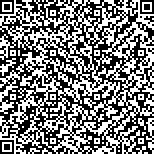何伟,韩伯军,王庆广,等.体外冲击波作用于肌腹或肌肉-肌腱接合处对脑卒中患者下肢痉挛及步行能力的影响[J].中华物理医学与康复杂志,2023,45(10):904-908
扫码阅读全文

|
| 体外冲击波作用于肌腹或肌肉-肌腱接合处对脑卒中患者下肢痉挛及步行能力的影响 |
|
| |
| DOI:10.3760/cma.j.issn.0254-1424.2023.10.008 |
| 中文关键词: 体外冲击波 脑卒中 痉挛 肌肉部位 |
| 英文关键词: Extracorporeal shockwave therapy Stroke Spasticity gastrocnemius muscle, myotendinous junction |
| 基金项目: |
|
| 摘要点击次数: 4064 |
| 全文下载次数: 4944 |
| 中文摘要: |
| 目的 探讨体外冲击波作用于腓肠肌肌腹或肌肉-肌腱接合处对脑卒中患者下肢痉挛及步行能力恢复的影响。 方法 采用随机数字表法将84例脑卒中患者分为对照组、肌腹冲击组和肌-腱冲击组,每组28例。3组患者均给予常规康复训练,肌腹冲击组和肌-腱冲击组患者在此基础上分别采用冲击波作用于腓肠肌肌腹部或肌肉-肌腱接合处。于治疗前、治疗1周、2周、3周后分别采用肌张力改良Ashworth分级(MAS)、踝关节被动活动范围(PROM)测试、疼痛视觉模拟评分(VAS)、10 m最大步行速度(10MWS)测试对3组患者进行疗效评定,同时对比上述时间点各组患者步频、步幅变化情况。 结果 经3周治疗后对照组踝关节PROM、疼痛评分,肌腹冲击组及肌-腱冲击组PROM、MAS、疼痛评分均较治疗前明显改善(P<0.05);并且肌腹冲击组PROM、MAS、疼痛评分及肌-腱冲击组MAS评分亦显著优于对照组(P<0.05);同时肌腹冲击组疼痛评分亦显著优于肌-腱冲击组(P<0.05)。治疗1周、2周后肌腹冲击组、肌-腱冲击组10MWS均明显优于对照组(P<0.05);治疗3周后肌腹冲击组10MWS亦显著优于肌-腱冲击组(P<0.05)。治疗2周后肌腹冲击组步频指标较对照组明显改善(P<0.05),治疗3周后肌腹冲击组步频指标明显优于对照组和肌-腱冲击组(P<0.05),肌-腱冲击组步频指标亦明显优于对照组(P<0.05)。治疗1周、2周、3周后肌腹冲击组及肌-腱冲击组步幅指标均显著优于对照组(P<0.05)。 结论 体外冲击波作用于腓肠肌肌腹或肌肉-肌腱接合处均可缓解脑卒中后腓肠肌痉挛及疼痛,改善患者步行能力;并且以冲击波作用于肌腹部时对卒中患者肢体痉挛及步频指标的改善作用更显著。 |
| 英文摘要: |
| Objective To explore any effect of using extracorporeal shockwave therapy (ESWT) on the gastrocnemius muscle or the myotendinous junction on spasticity and the walking ability of stroke survivors. Methods A total of 84 stroke survivors were randomly divided into a control group, a muscle belly group, and a myotendinous junction group, each of 28. In addition to conventional rehabilitation, the muscle belly and myotendinous junction groups received ESWT applied to the belly of the gastrocnemius muscle or the myotendinous junction. Before as well as one, two and three weeks after the treatment, all were evaluated using the Modified Ashworth Scale (MAS), passive range of motion (PROM), a visual analogue scale (VAS) for pain rating, and 10m maximum walking speed (10m MWS). Stride frequency and length were also measured and compared among the 3 groups. Results After three weeks of ESWT treatment the average MAS, PROM and VAS scores of the belly and the junction group were significantly improved compared to before the treatment. The average MAS, PROM and VAS scores of the belly group and the average MAS score of the junction group were then significantly superior to the control group′s averages, and the average VAS score of the belly group was significantly better than that of the junction group. After one and two weeks of treatment, the average 10MWSs of the belly and junction groups were significantly better than the control group′s average, and after 3 weeks the belly group′s average speed was significantly better than the junction group′s. The stride frequency of the belly group had improved significantly compared with the control group after 2 weeks, and after 3 weeks both experimental groups had significantly better frequency than the control group. The average stride length of both the belly and junction groups was significantly better than the control group′s average throughout the testing. Conclusion ESWT applied to the belly of the gastrocnemius muscle or the myotendinous junction can relieve muscle spasticity and pain and improve walking ability. Applying ESWT to the muscle belly is superior to on the myotendinous junction in terms of therapeutic efficacy. |
|
查看全文
查看/发表评论 下载PDF阅读器 |
| 关闭 |
|
|
|